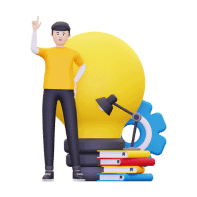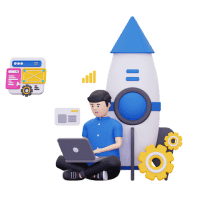Hook Story Offer Framework
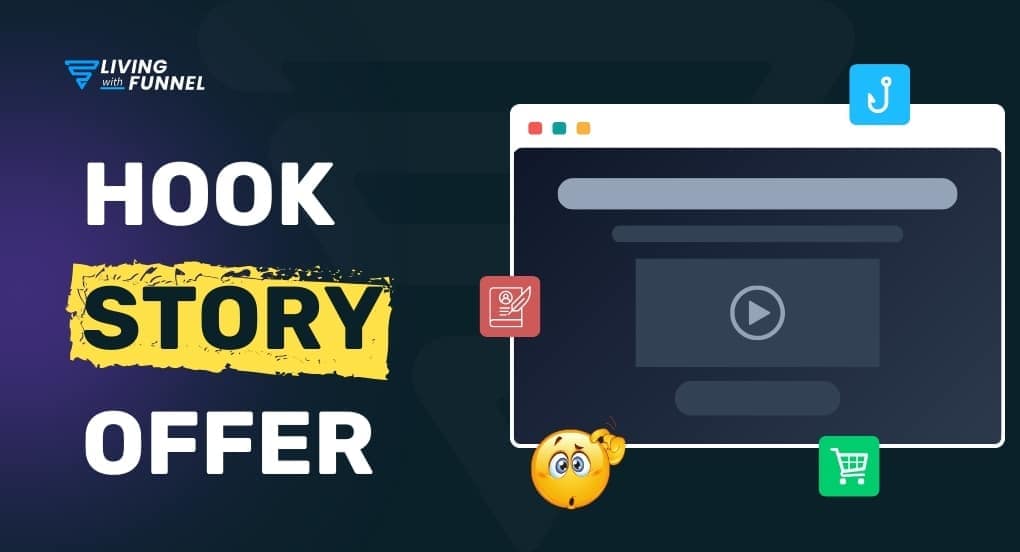
The “Hook, Story, Offer” framework is the key to online marketing success. If your traffic campaigns, landing pages, email campaigns, or sales funnels aren’t working as good as you expect, it’s ALWAYS either the Hook, Story, or Offer.
Russell Brunson popularized the “Hook, Story, Offer” framework in his best-selling book Dotcom Secrets. It has three parts:
- The Hook: Captures the reader’s attention.
- The Story: Building emotional connections and trust through relatable experiences and challenges allows you to share your story. This step counters skepticism and boosts the perceived value of what you’re selling.
- The Offer: Transitions from storytelling to presenting a compelling proposition that prompts action. A well-crafted offer can significantly influence customer psychology and encourage the desired action.
That’s the fundamentals of pretty good Direct Response Marketing.
Every stage of your sales funnel should feature a Hook, a Story, and an Offer. This applies to your online ads, emails, soap opera sequences, sales pages, upsells, webinars, or phone calls.
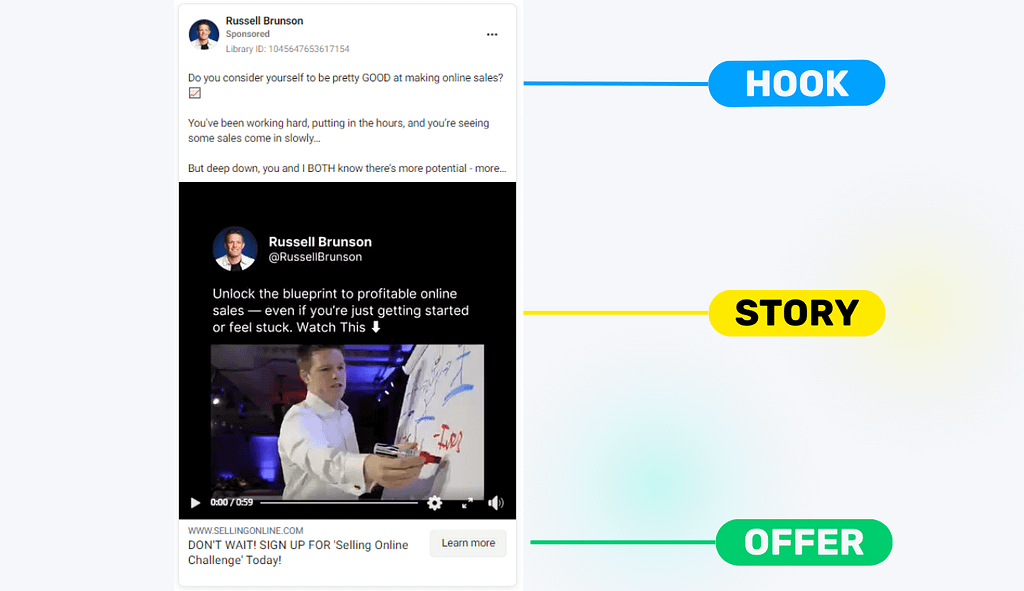
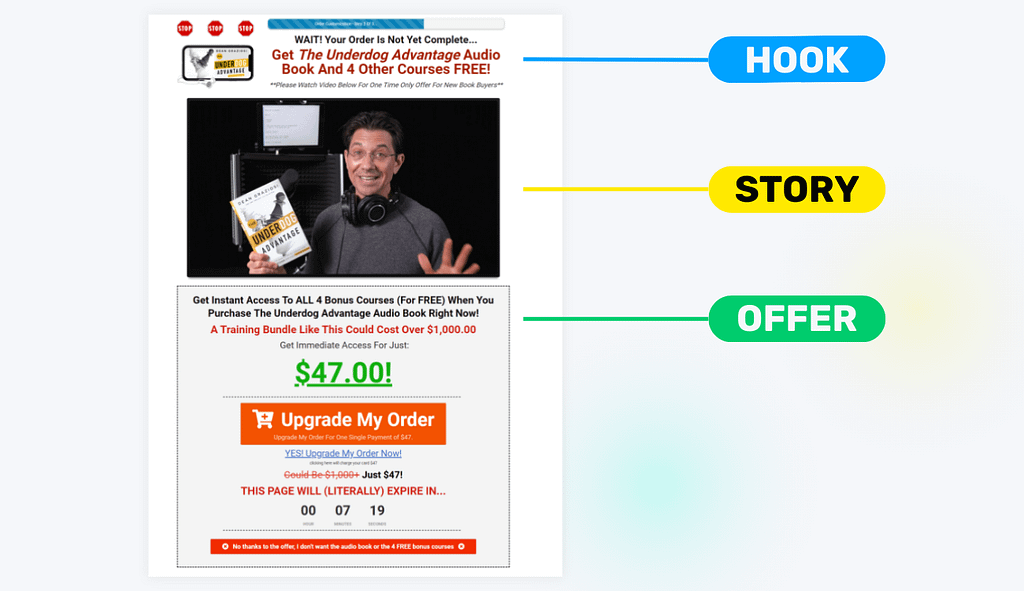
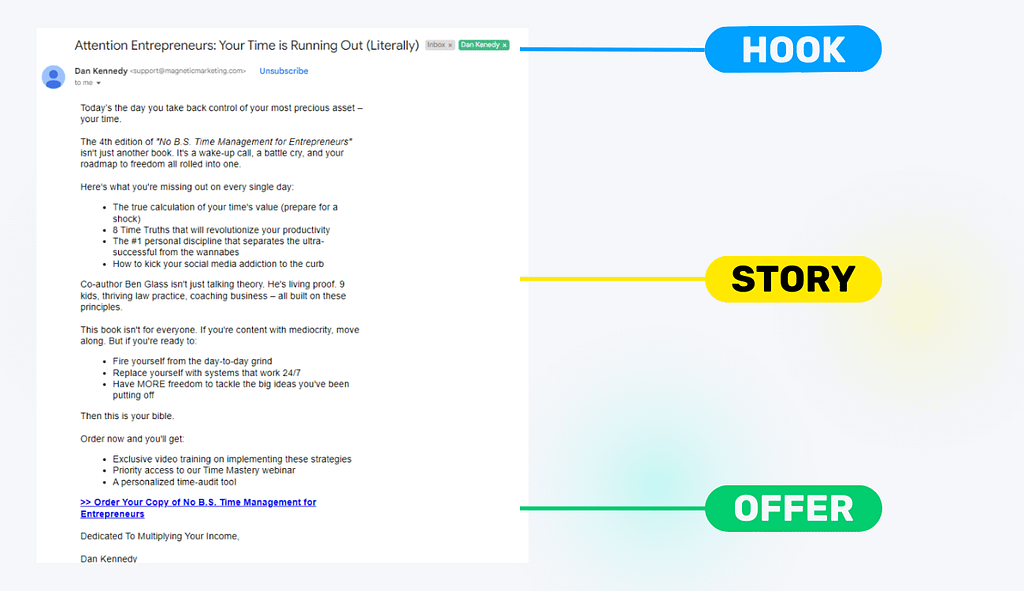
Regardless of the kind of sales copy you create or the marketing channel you use, the first step is to grab the attention of your ideal customers with a hook. Next, you should tell your story to form a connection and generate interest, and then you present your offer.
I recommend you watch Russell Brunson’s video first. It contains incredibly valuable information about the Hook, Story, Offer framework.
The Hook: Grabbing Attention from the Start
The Hook is what makes your target audience STOP scrolling and pay attention.
We see hooks everywhere!
Every cool picture on Instagram, every interesting YouTube thumbnail, even the blog headlines – they’re all hooks trying to catch your eye.
It could be something funny, a big idea, the start of an exciting story, a picture, the background of a video, or even something silly you do in the first few seconds to get dream customers interested.
Elevate Your Hooks: Best Practices
1. Make Curiosity
Think of curiosity like a treasure hunt – you drop a few clues, but not the whole map. This makes people want to explore and find the treasure themselves!
You can find lots of excellent hooks that make you curious.
For example, here’s a Facebook Ad from Sabri Suby
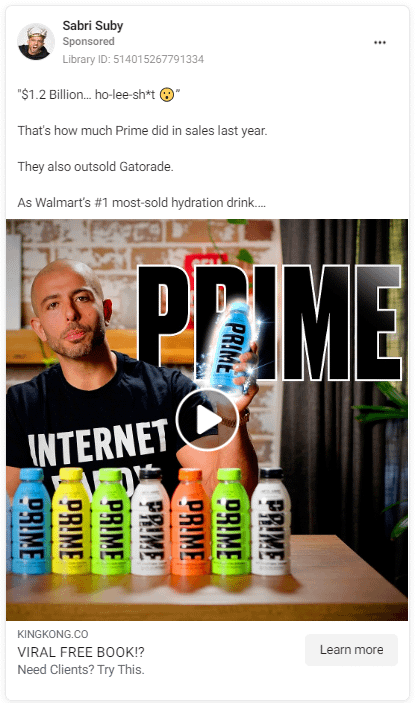
The video thumbnail grabs your attention. It’s colorful and interesting, and makes you wonder, “$1.2 Billion? What’s that about? A free book that went viral? Or something about getting more customers? I gotta see this!”
The title and headline are super intriguing. They make you ask questions and want to find out the answers.
These thumbnails from Prince EA’s YouTube channel are also a great example.
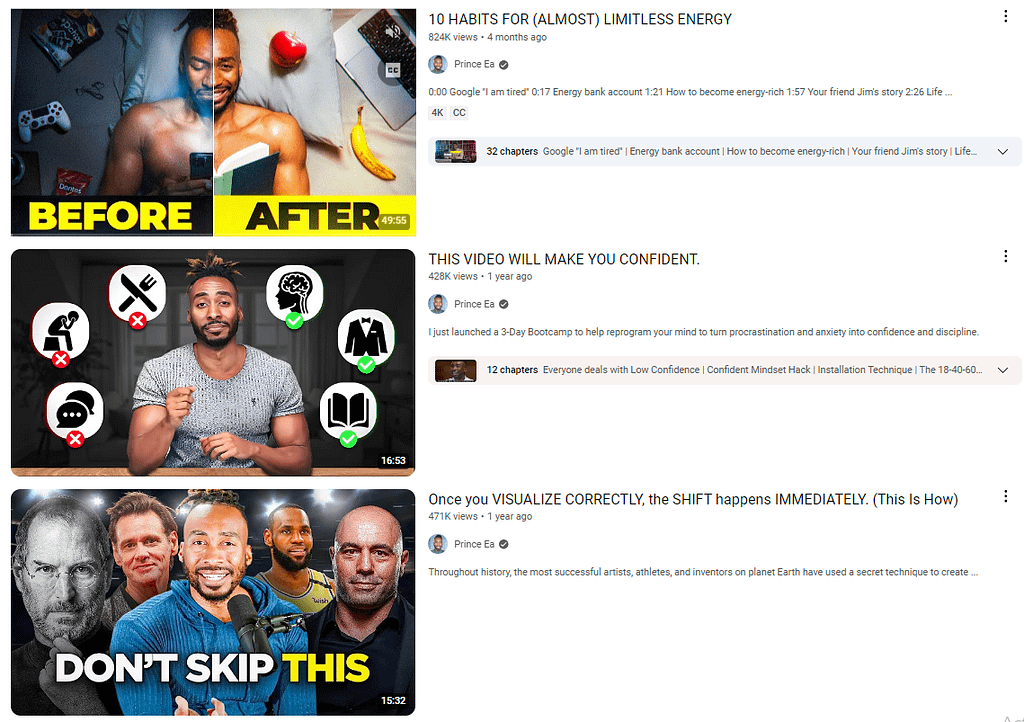
The first thumbnail shows a dramatic “Before” and “After” comparison.
This instantly grabs attention by promising a transformation. It makes viewers curious about what habits led to such a change, encouraging them to click and watch.
“DON’T SKIP THIS” suggests valuable information you might miss, making you curious about what that important content might be.
The image with celebrity faces implies they share some common “secret technique”, making viewers curious about what successful people know that they don’t.
2. Build Connection and Empathy
People leave when they don’t feel heard. They scroll past ads that miss the mark.
Why? The message doesn’t click. It’s not for them.
Empathy changes this. It’s your secret weapon.
Sharing a personal story can significantly enhance empathy and connection with your audience.
Show your audience you get them. Really get them. Prove you understand their struggle.
Do this, and they’ll keep reading. Why? Your solution feels tailor-made.
Key points:
- Connect Emotionally
- Demonstrate understanding
- Show you’ve walked in their shoes
- Make your offer feel personal
- Address specific pain points
Empathy keeps eyes on the page. It turns scrollers into readers. Readers into buyers.
Speak their language. Feel their pain. Offer hope. That’s how you hook them.
Here’s an example of the Web Copy Masterclass.
They speak to SEOs and content agency owners. It promises solutions for their exact problems.
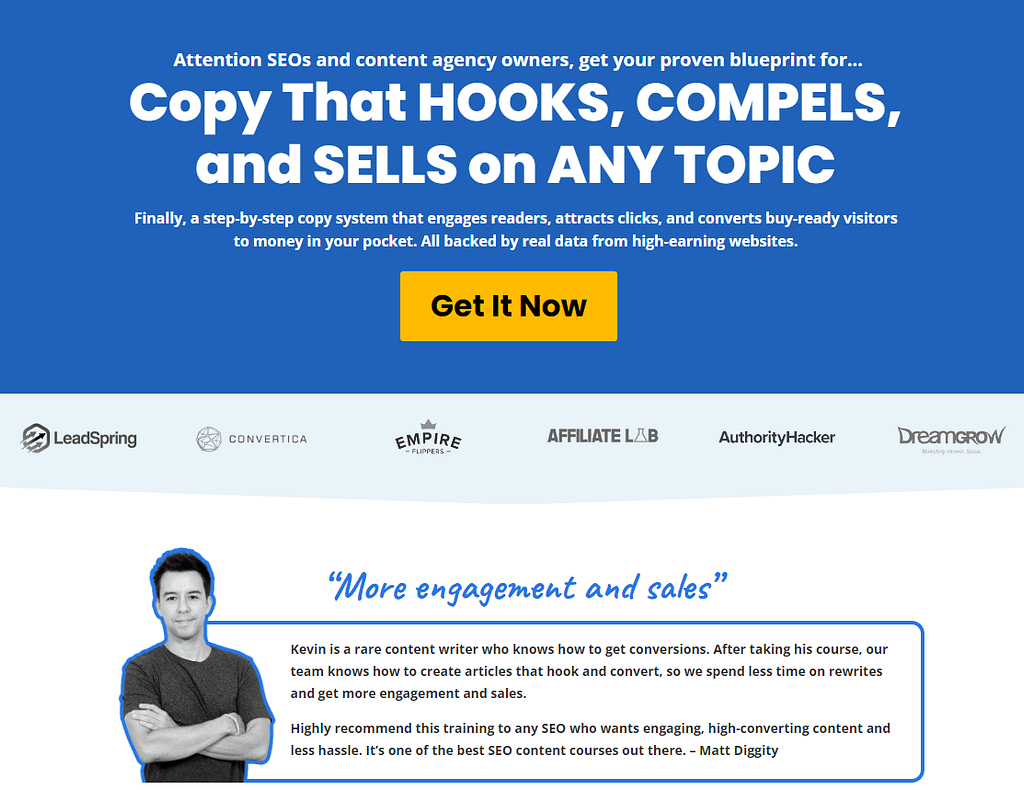
The course claims to work on “ANY TOPIC.” This builds trust. It shows confidence in solving diverse content issues.
It tackles doubts head-on. It reassures that your specific challenges matter.
Real data and success stories follow. This builds credibility and connection.
By sharing wins and results, the creator shows empathy. They understand the struggle for high-converting content. They offer a proven fix.
3. Clear Promise
What’s your market’s biggest headache?
Make a bold claim that grabs attention.
Picture this: Your audience wants to shed pounds. Now, imagine their reaction to:
“Drop 30 Pounds in 3 Months – Keep Eating What You Love!”
An amazing break through formula can make a bold claim that grabs attention and promises significant results.
They fear giving up their favorite foods. Show them it’s not necessary. That’s powerful.
Look at the Eat Stop Eat page. The top promise hooks readers instantly.
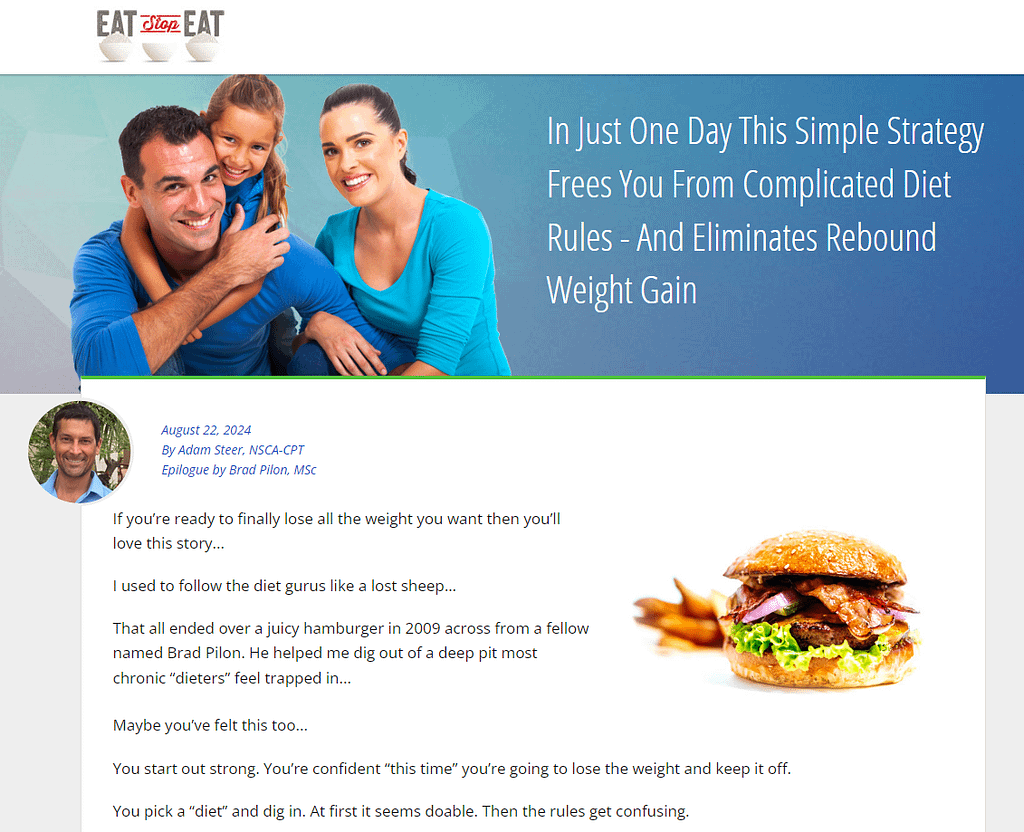
Your audience craves solutions. Promise to fix their problem without the expected pain. They’ll want more.
Key points:
- Identify core problem
- Make eye-catching promise
- Address fears head-on
- Show unexpected benefits
- Highlight pain-free solutions
Remember: Solve problems. Ease fears. Exceed expectations. That’s how you hook them.
Common Mistakes to Avoid with Hooks
Even the most experienced marketers can fall into these traps. Steer clear of:
- Being too vague or generic: Ensure your hook is specific and tailored to your audience.
- Overpromising and underdelivering: Make sure your hook sets realistic expectations that your offer can fulfill.
- Using jargon or complex language: Keep your language simple and accessible to connect with a wider audience.
- Failing to connect emotionally with the audience: Craft hooks that resonate on an emotional level to forge a stronger connection.
- Neglecting to test different hooks for effectiveness: Experiment with various hooks to see which ones truly capture attention.
By avoiding these pitfalls, you’ll craft hooks that consistently capture attention and pave the way for the next crucial step in the HSO framework – the story.
The Story: Building Emotional Connections
Once you’ve hooked your audience, it’s time to reel them in with compelling stories that build emotional connections. This is where you build an emotional connection, establish credibility, and set the stage for your offer.
A story in marketing is powerful because it conveys information while building trust and emotional engagement.
Stories bond the seller to the customer, creating an emotional attachment beyond the transactional relationship. Personalizing a sales story makes it more detailed, specific, and creates a stronger connection.
Sharing personal stories about challenges faced and solutions discovered fosters authenticity in your storytelling. Starting with the most compelling aspects builds curiosity and keeps the reader interested. Creativity and situational skills are essential for a great story.
Your story’s core goals are:
- Increase the offer’s value
- Build a connection with your brand.
Now, you might wonder how to tell a good story compellingly and irresistibly, right?
Here are some fantastic story frameworks you can follow!
1. The Hero’s Two Journeys
The Hero’s Journey is a timeless storytelling framework that resonates deeply with audiences. Popularized by Joseph Campbell, this structure can be adapted to create powerful marketing narratives.
A relevant story that resonates with your audience can make the Hero’s Journey even more impactful.
Here’s how you can apply it:
- Ordinary World: Introduce your customer’s current situation or problem.
- Call to Adventure: Present a challenge or opportunity that disrupts the status quo.
- Refusal of the Call: Acknowledge the hesitation or obstacles your customer might face.
- Meeting the Mentor: Position your brand or product as the guide or solution.
- Crossing the Threshold: Show the customer taking the first step with your product/service.
- Tests, Allies, Enemies: Describe the challenges and successes along the way.
- Approach to the Inmost Cave: Build tension as the customer faces their biggest challenge.
- Ordeal: Illustrate how your product/service helps overcome the main obstacle.
- Reward: Highlight the benefits and positive outcomes of using your solution.
- The Road Back: Show how the customer’s life improves after implementing your solution.
- Resurrection: Emphasize the transformation and lasting impact.
- Return with the Elixir: Conclude with the customer’s success and newfound wisdom.
For example,
Let me tell you a quick story.
I was an ambitious young professional who was hard-working and driven to succeed. Then something happened that changed my life forever…
- I landed my dream job at a fast-paced tech startup
- I was excited about the opportunity to make a real impact.
At the time, I had NO IDEA the impact this would have. I quickly became overwhelmed by the workload and competing priorities.
Just when I thought things couldn’t get any worse, I started missing deadlines and making careless mistakes.
I was on a downward slide because I couldn’t keep track of all my tasks or manage my time effectively.
Needless to say, I felt stressed, anxious, and like I was letting everyone down, including myself. That’s when I truly hit rock bottom I completely forgot about an important client meeting. This meant My boss pulled me aside and warned me that my performance needed to improve, fast.
That’s when I figured out I needed a BETTER SYSTEM to manage my time and tasks, but I wasn’t sure where to start.
Then, something happened that changed everything:
- A colleague noticed my struggle and recommended the X app
- She showed me how it helped her juggle multiple projects effortlessly
That was the spark in the tail I needed. I was determined to turn things around. I knew I had found a potential solution.
Here’s what happened next, I downloaded X and spent a weekend learning all its features, I input all my tasks, set up project timelines, and created daily schedules
Then one day I looked up and realized I could now:
- Keep track of all my responsibilities without feeling overwhelmed
- Prioritize tasks effectively and meet deadlines consistently
I was forever changed by the fact that I discovered the power of effective time management and its impact on my work and life. I now felt / saw myself as a capable, organized professional who could handle anything thrown my way.
And that’s why I knew I couldn’t stop there. I decided To share my success with X with my colleagues to continuously refine my time management skills.
Now I am known as the GO-TO person for productivity tips in my office and able to balance multiple high-priority projects without breaking a sweat.
I’m able to consistently exceed expectations at work and have time for my personal life and hobbies, achieving a true work-life balance.
This makes me feel confident, in control, and excited about my future career prospects.
What I’d like you to take away from all this is:
- No matter how chaotic your work life seems, the right tools and techniques can transform your productivity
- X isn’t just an app, it’s a game-changer that can help you reclaim control of your time and achieve your goals.
2. Before-After-Bridge
The Epiphany Bridge technique focuses on sharing a transformative moment or realization. It’s about conveying the “aha!” moment that led to a significant change.
A relatable story can make the Before-After-Bridge framework more effective by connecting with the audience’s experiences.
Let’s break down each component of the BAB framework:
- Before:
- Describe the current state or problem your audience is experiencing.
- Paint a vivid picture of their pain points, frustrations, or challenges.
- Use emotive language to help your audience relate to this state.
- After:
- Illustrate the ideal scenario after the problem is solved.
- Highlight the positive outcomes and benefits.
- Create a desirable vision that your audience will want to achieve.
- Bridge:
- Explain how your product or service bridges the gap between the “before” and “after” states.
- Provide clear, concrete steps or features that facilitate the transformation.
- Position your offer as the key to achieving the desired “after” state.
The BAB framework works by creating a stark contrast between the undesirable “before” state and the appealing “after” state. This contrast builds tension and desire, making your audience more receptive to your offer when you present it as the “bridge.”
For example,
🌟 Sarah’s SlimFast Success Story! 🌟
Before:
Struggling with weight, low energy, and health concerns, Sarah had almost given up hope. Years of failed diets left her feeling defeated and unhappy with her reflection.
After:
Six months later, Sarah is beaming with confidence!
She’s rocking her favorite dress, bounding up stairs effortlessly, and impressing her doctor with improved health markers. Her transformation isn’t just physical – she’s radiating happiness and enjoying life to the fullest!
The Bridge:
What made the difference? X Advanced Nutrition!
Sarah discovered the easy-to-follow the X 3-2-1 Plan:
- 3 balanced snacks
- 2 delicious meal replacement shakes
- 1 nutritious meal daily
No complicated calorie counting, just simple, effective results. Plus, the supportive X community kept her motivated every step of the way.
Ready to write your own success story? Try X today and unlock the healthier, happier you! 💪🥤✨
This effective approach creates a sense of shared experience and hope. It shows you understand your audience’s struggles because you’ve been there, too.
By mastering these storytelling techniques, you’ll create narratives that engage your audience and prime them for your offer. Remember, the goal of your story is to build trust, create emotional investment, and demonstrate the value of what you’re about to offer.
3. The PAS Formula
Problem-Agitate-Solve (PAS) is another powerful storytelling framework:
- Problem: Identify and articulate the main issue your audience is facing.
- Agitate: Dig deeper into the problem, stirring up emotions and emphasizing the pain points.
- Solve: Present your solution as the answer to their woes.
Avoid making the reader perform too many mental leaps to understand the connection between the problem and the solution.
Here’s how it might look in practice:
Subject: Transform Your Smile, Transform Your Life: Sarah’s Story
Dear [Name],
[Problem]
Sarah dreamed of becoming a news anchor, but one thing held her back: her smile. Her yellowed, crooked teeth were a constant source of embarrassment.
[Agitate]
As her big TV station interview approached, Sarah’s confidence crumbled. She imagined the harsh studio lights highlighting every imperfection in her teeth.
Years of avoiding photos and hiding her opinions in meetings flashed before her eyes. Would her dental issues cost her this dream job, too?
The anxiety was almost unbearable.
[Solve]
That’s when Sarah discovered X Smiles Dental.
Our team listened to her concerns and crafted a personalized treatment plan. With our advanced whitening techniques and Invisalign treatment, Sarah’s smile transformed in just a few months.
The result?
Sarah walked into her interview radiating confidence.
She landed her dream job and now inspires thousands with her dazzling smile every night on TV.
Smiling brightly,
Dr. Johnson – X Smiles Dental
P.S. Don’t let dental issues hold you back from your dreams. Take the first step towards your smile transformation now!
This PAS story illustrates how the formula can create an emotional journey for the reader, making dental services more relatable and appealing.
4. The Epiphany Bridge
The Epiphany Bridge technique focuses on sharing a transformative moment or realization. It’s about conveying the “aha!” moment that led to a significant change.
A well-crafted sales hook can make the Epiphany Bridge technique even more effective by leading the audience toward your offer.
For example:
I was about to give up on my business when I stumbled upon the Hook, Story, Offer framework. Suddenly, everything clicked.
I realized that I had been approaching marketing all wrong. This simple three-step process changed everything for me, and I know it can do the same for you.
This effective approach creates a sense of shared experience and hope. It shows that you understand your audience’s struggles because you’ve been there, too.
By mastering these storytelling techniques, you’ll create narratives that not only engage your audience but also prime them for your offer.
Remember, the goal of your story is to build trust, create emotional investment, and demonstrate the value of what you’re about to offer.
💡 Pro Tip: Want to dive deeper into crafting stories that sell? Check out Expert Secrets and Copywriting Secrets. These books offer invaluable insights on weaving compelling narratives into your marketing, helping you take your storytelling skills to the next level.
The Offer: Sealing the Deal
You’ve hooked your audience with a compelling opening and reeled them in with an engaging story. Now it’s time for the grand finale – the offer. This is where you present your solution and motivate your audience to take action.
Your landing page plays a crucial role in presenting your offer and motivating your audience to take action.
The offer are NOT always about asking people to buy stuff.
Offers are everywhere in marketing – in your ads, emails, and sales funnels. Each step of the way, you’re making little offers.
For example, when you say, “Click here to watch a video that’ll teach you something cool!” or “Give me your email, and I’ll send you a free guide!”
Sometimes, it’s as simple as asking folks to like your post, leave a comment, or sign up for your newsletter.
The key is to make your offer so awesome that people can’t resist saying yes!
Now, if you’ve hooked someone and told a great story, but they’re still not biting, don’t worry. You might just need to sweeten the deal. Maybe add some extra goodies or make your offer sound even more exciting. Remember, the better your offer, the more likely people will do what you hope they’ll do.
You might wonder how to create an irresistible offer for your sales funnel that your target market will not be able to resist.
So check out the video below to learn how I craft irresistible offers:
Excited to learn more? Check out these awesome best practices you can follow.
1. Create a Stack Slide
Did you know there are two ways to have the lowest-priced product?
- Lower your price (but say goodbye to profits!)
- Pump up the value so much that your price seems like a steal.
We’re going for option 2!
An effective sales page can significantly enhance the perceived value of your offer.
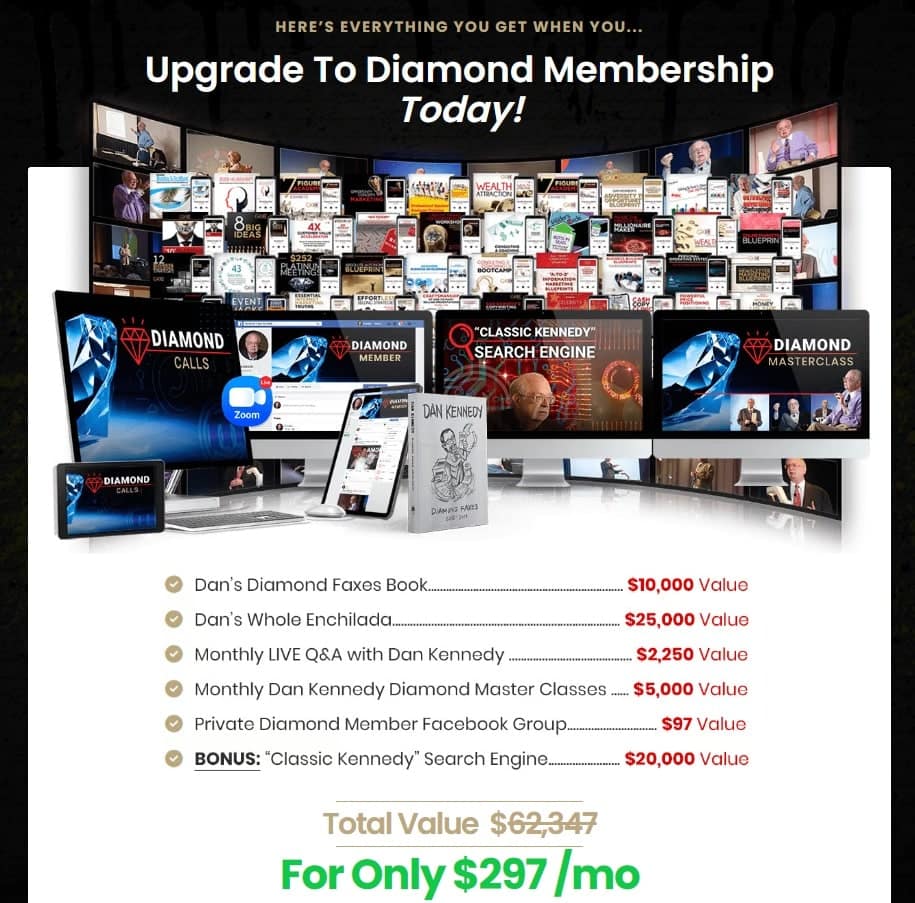
Here’s how to create an awesome Stack Slide:
- Step 1: Brainstorm Bonuses: Think about your dream customer. What else could you give them to help them succeed? Let your imagination run wild!
- Step 2: Build Your Irresistible Offer: Look at your ideas. Which ones could you combine to create an offer so amazing your customers would be crazy to say no?
Remember, the more value you add, the easier it is to justify your price!
In the book “$100M Offers,” Alex Hormozi discusses the four value drivers. Two of these drivers are the ones you want to increase:
- Dream outcome – “What will I get?”
- Likelihood of success – “How sure am I it’ll work?”
And two you want to reduce:
- Time to achieve results – “How long will it take?”
- Effort required – “How hard will I have to work?”
Pro Tip: Think outside the box! Most people try logical solutions, but those have probably been tried before. Instead, look for psychological solutions. That’s where the real magic happens!
By creating a value stack, you’re not just selling a product. You’re offering a transformative experience that your customers can’t resist!
2. Creating Scarcity
Scarcity sells. It boosts demand by limiting supply. Offer exclusive products to spark interest and drive sales. Create urgency to push conversions. Use “low stock” alerts to make buyers act fast.
Three scarcity types:
- Limited seats or slots
- Limited bonuses
- One-time offers
Example: The Funnel Builder Secrets Certification program is opening its doors for just 12 people this month.
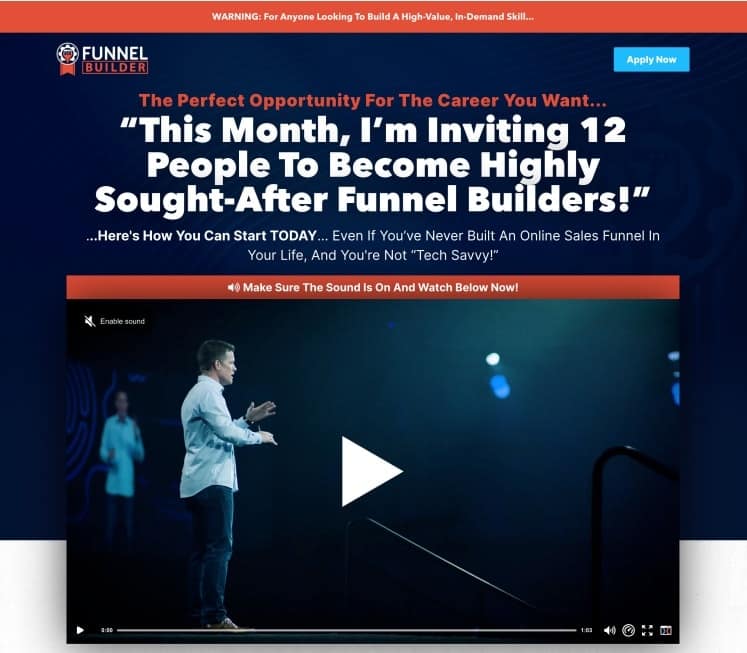
This tactic does two things:
- Raises prices by cutting supply
- Makes products seem more valuable
Result? Quicker buying decisions.
Key points:
- Exclusivity drives desire
- Urgency prompts action
- Scarcity boosts perceived value
- Limited offers create FOMO
Remember: Use scarcity ethically. Don’t fake it. Real limits work best.
3. Creating a Sense of Urgency
Urgency drives quick decisions. Use these tactics:
- Set firm deadlines
- Add countdown timers
- Limit available stock
Countdown timers in ads push people to act fast.
Cap discount claims to ramp up urgency.
Example: Koala AI offers a 40% discount on the annual subscription when they reach 15,000 paid users. This offer is available for just one week.
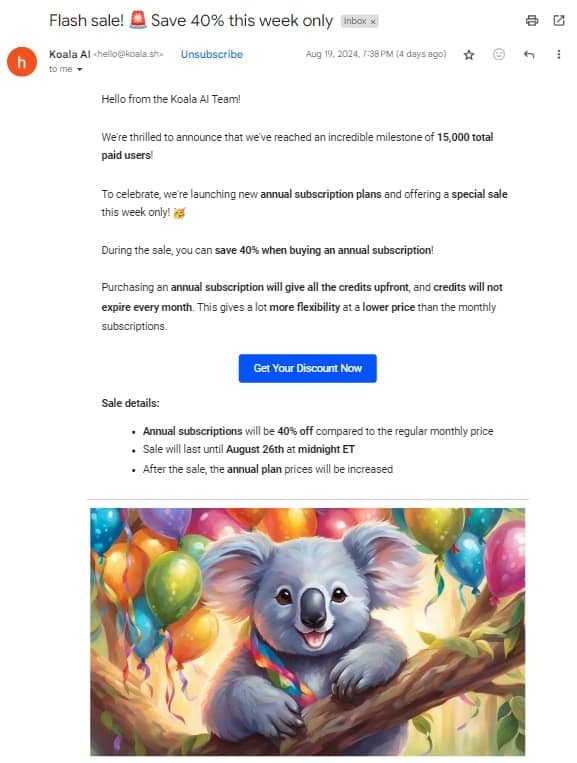
Urgency lowers barriers to action. It makes prospects decide faster, lifting conversion rates.
Key points:
- Time limits spur action
- Visual cues (like timers) work
- Scarcity fuels urgency
- Quick decisions mean more sales
You should be honest with urgency. False deadlines backfire. Real limits create real results.
Use urgency wisely. It’s a powerful tool in your marketing arsenal.
4. Use Guarantees
Guarantees slash buyer risk. They build trust in purchases. A money-back promise cuts doubt and boosts confidence. Longer guarantees show faith in your product. They often lead to fewer refunds.
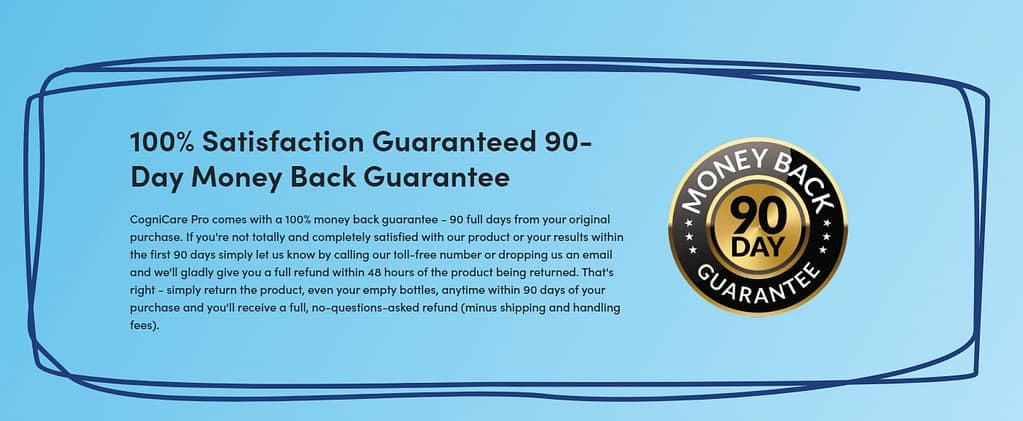
Three key guarantee types:
- Performance
- Satisfaction
- Authenticity
Shift risk from buyer to seller. Use guarantees or trials. Less risk means more sales, which builds trust and long-term loyalty.
Key points:
- Guarantees ease buyer fears
- Strong guarantees mean confident sellers
- Risk transfer boosts conversions
- Trust leads to repeat customers
Clear, simple guarantees work best. They show that you stand behind your product, and customers feel safe buying.
Use guarantees strategically. They’re powerful tools for sales and trust-building.
Testing and Refining Offers in Your Sales Funnel
So you’ve created an offer, but how do you know if it’s working? Don’t worry—we’ve got you covered. Let’s discuss how to test and improve your offers to make them even better.
A/B Testing: The “Which Is Better?” Game: Imagine you have two flavors of ice cream. How do you know which one people like more? You let them try both! That’s what A/B testing is all about.
Here’s how it works:
- Make two versions of your offer
- Show version A to half your audience and version B to the other half
- See which one gets more people saying “Yes!”
Example: You’re selling an online course. Try two different prices:
- Offer A: $97 one-time payment
- Offer B: $37 for 3 months. See which one more people will go for!
Ask Your Audience Sometimes, the best way to know what people want is to just ask them! Send out a quick survey or chat with some customers. Example: “Hey! We’re thinking of adding a bonus ebook to our course. Would you prefer: A) ’10 Quick Recipes for Busy Days’ or B) ’30-Day Meal Planner’?”
Start Small and Grow Don’t worry about making your offer perfect right away. Start with something simple and improve it bit by bit.
Example: You’re offering a fitness program.
- Week 1: Just the workout videos
- Week 2: Add a nutrition guide
- Week 3: Include a support group. See how each addition affects sign-ups!
Watch the Numbers: Keep an eye on how many people say “Yes” to your offer. If the number is low, try changing things up! Example: If only 1 out of 100 people are buying, you might want to:
- Lower the price
- Add more bonuses
- Change your sales message
Remember, making great offers is like learning to cook. You might burn a few cookies at first, but keep trying!
Each time, you’ll get better and better. Soon, you’ll be whipping up offers that people just can’t resist!
Implementing the Hook Story Offer Framework
Ready to put the Hook Story Offer into action?
Don’t worry, it’s easier than you think. Let’s break it down into simple steps with some fun examples.
- Start with Your Offer: Think about what you’re selling and why it’s awesome. This will help you create your hook and story. Example: You’re selling an online Yoga course for beginners.
- Craft Your Hook: Come up with a catchy phrase or question that grabs attention. Example: “Transform your body and mind in just 30 days – no gym required!”
- Tell Your Story: Share a tale connecting people with your offer. Example: “Meet Tom, a stressed-out office worker who couldn’t touch his toes. After 30 days of our Yoga course, he’s now doing headstands and feeling zen!”
- Present Your Offer: Introduce your product or service as the solution. Example: “Introducing ‘Yoga for Everyone’ – a 30-day online course that brings the yoga studio to your living room!”
- Put It All Together: Let’s see how it all flows.
- Hook: “Transform your body and mind in just 30 days – no gym required!”
- Story: “Meet Tom, a stressed-out office worker who couldn’t touch his toes. He always thought yoga was for flexible people until he tried our ‘Yoga for Everyone’ course. After 30 days, Tom touched his toes and did headstands! More importantly, he’s sleeping better, feeling less stressed, and actually looking forward to Mondays.”
- Offer: “Introducing ‘Yoga for Everyone’ – a 30-day online course that brings the yoga studio to your living room! Start your journey today for just $49 and discover the new, more flexible you!”
- Test and Tweak: Try your HSO framework and see how people react. If it’s not working great, don’t worry! Just make small changes and try again. Example: If people aren’t excited about “Transform your body and mind,” you could try a new hook like “Say goodbye to back pain and hello to inner peace with just 15 minutes a day!”
Conclusion
Every step of your sales funnel should include a hook, a story, and an offer. This applies to the online ads you run, the emails you send, the landing page you create, lead generation campaigns, and any additional sales techniques such as upsells, webinars, or phone calls.
The Hook, Story, Offer framework is more than just a marketing technique – it’s a powerful tool for connecting with your audience, building trust, and driving conversions. By mastering this three-step formula, you’ll be able to create marketing campaigns that capture attention and inspire action.
Remember:
- Your hook grabs attention and piques curiosity
- Your story builds emotional connection and demonstrates value
- Your offer provides a clear path to solving the audience’s problem
As you implement the HSO framework in your marketing efforts, keep testing, refining, and adapting. The market is always evolving, and so should your approach.
If something isn’t working in your sales funnels, it’s always either the hook, the story, or the offer.
Now it’s your turn. Apply what you’ve learned about the Hook, Story, Offer framework to your next marketing campaign.
You might be surprised at how quickly you start seeing results!
FAQs
What is the Hook, Story, Offer framework?
The Hook, Story, Offer framework is all about grabbing attention, connecting emotionally, and making a compelling offer to drive action. It’s a powerful way to boost conversions and engage your audience!
Is the Hook Story Offer suitable for all types of businesses?
While the HSO framework is highly adaptable, its effectiveness can vary depending on the business model and industry. It’s particularly well-suited for:
- B2C companies selling products or services
- Online businesses and e-commerce
- Coaching and consulting services
- Information products and courses
However, even B2B companies and more traditional industries can benefit from the principles of HSO by adapting them to their specific context. The key is to focus on the core elements: capturing attention, building connection, and presenting value.
How can I implement the Hook, Story, Offer framework in my marketing strategy?
You can effectively implement the Hook, Story, Offer framework by incorporating captivating hooks in your emails or videos, sharing relatable stories to connect with your audience, and presenting irresistible offers to drive conversions. This approach not only boosts engagement but also makes your marketing efforts more impactful.
What is the difference between a hook and a story in marketing?
While both hooks and stories are crucial elements of effective marketing, they serve different purposes:
- Hook: This is the attention-grabber, typically a short, punchy statement or question designed to pique curiosity and draw the audience in. It’s the “first impression” of your marketing message.
- Story: This is the meat of your message, where you build emotional connection, establish credibility, and set the context for your offer. It’s longer and more detailed than the hook, often following a narrative structure.
In essence, the hook is what gets people to start listening, while the story is what keeps them engaged and primes them for your offer.
What are the common elements of successful hooks, stories, and offers?
While each component of the HSO framework has its unique characteristics, there are some common elements that contribute to their success:
- Relevance: All elements should be tailored to your specific audience and their needs.
- Clarity: Whether it’s a hook, story, or offer, the message should be clear and easy to understand.
- Emotional Appeal: Successful marketing often taps into emotions, whether it’s curiosity, empathy, or desire.
- Value Proposition: Each element should contribute to communicating the value you’re offering.
- Authenticity: Your audience can spot insincerity. Ensure your HSO elements are genuine and align with your brand.
How does the Hook Story Offer framework compare to other marketing frameworks?
The HSO framework stands out for its simplicity and focus on narrative structure. Here’s how it compares to some other popular frameworks:
- AIDA (Attention, Interest, Desire, Action): HSO aligns closely with AIDA, with the hook capturing attention, the story building interest and desire, and the offer prompting action.
- 4 Ps (Product, Price, Place, Promotion): While the 4 Ps focus on overall marketing strategy, HSO is more specific to messaging and can be used within the broader 4 Ps framework.
- SOSTAC (Situation, Objectives, Strategy, Tactics, Action, Control): HSO can be seen as a tactical approach within the broader strategic planning of SOSTAC.
The strength of HSO lies in its storytelling approach, making it particularly effective for content marketing and sales copywriting. It’s often easier to implement and remember than more complex frameworks, making it a favorite among marketers of all levels.

John R. Bryant
John R. Bryant, founder of Living With Funnel, is a funnel building expert and digital marketing strategist with over 10 years of experience. Specializing in conversion optimization and funnel building. His expertise in lead generation, email marketing, and CRM systems drives client success through increased conversion rates and optimized marketing automation.
Continue Learning With These Topics

